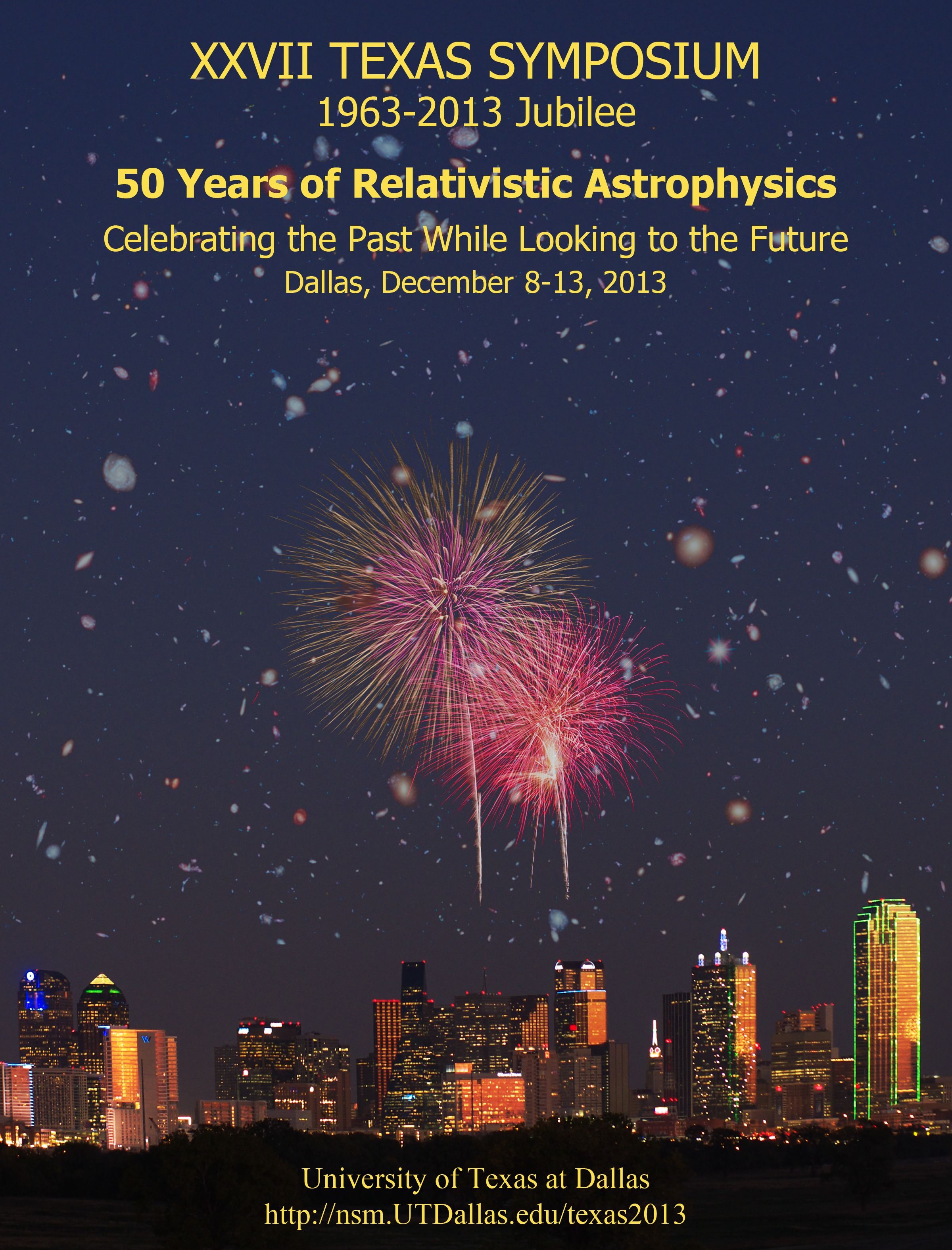Celebrating Fifty Years of Relativistic Astrophysics
|
Celebrating Fifty Years of Relativistic Astrophysics |
|
The 27th Texas Symposium on Relativistic Astrophysics will be held in downtown Dallas December 8 - 13, 2013. It is organized by the Department of Physics at The University of Texas at Dallas (UTD) and is chaired by Mustapha Ishak and Wolfgang Rindler. The Symposium will include both invited and contributed talks and posters. The trigger for that first meeting had been the recent creation in Dallas of a new research institution called SCAS ("Southwest Center for Advanced Studies"), a part of the Graduate Research Center of the Southwest (GRCSW). It was loosely modeled after the Princeton Institute, and was both the brain child and beneficiary of the far-sighted founders of Texas Instruments (and Dallas City Fathers) Erik Jonsson, Cecil Green, and Eugene McDermott. That institute eventually (in 1969) became the nucleus of a flourishing new research university — UTD. But in 1963 it was new and unknown. It needed to be put on the map. Relativity was one of its ingredients, just as it was at the Princeton Institute, which had essentially grown around Einstein. So three relativists — one from SCAS and two from the University of Texas at Austin — devised a clever scheme: realizing that an entirely new research field was about to be opened up, namely the significant entry of relativity into astrophysics, they decided to create a new discipline which they named "relativistic astrophysics", and to call for an immediate meeting on this to be sponsored jointly by SCAS and UT Austin. It was to be devoted mainly to the then most pressing problem in astrophysics, which was to explain the mechanism whereby the newly discovered "Quasars" — the most powerful energy sources in the sky — managed to radiate away the energy equivalent of five hundred thousand suns in short order. The most recently proposed mechanism involved gravitational collapse, a purely relativistic phenomenon, not yet well understood. Three hundred of the world's finest relativists and astrophysicists enthusiastically came to attend. The meeting was, by common consent, such a success that it simply had to be repeated. And repeated it was. After one year it returned to Austin, and thereafter, at regular two-year intervals, it began to migrate: first to New York, then Boston, eventually crossing the ocean to Munich, London, Jerusalem, Paris, Florence ("Texas in Tuscany"), and so on, but faithfully returning to the US every other time, e.g. to Dallas and Austin, but also Chicago, Berkeley, Stanford, etc. Throughout, the title "Texas Symposium" has been retained! At Texas 27 we plan not only to look back nostalgically over the progress made throughout the last fifty years, but also to have the finest experts look forward to the great things to come. Without a doubt there are more problems in the field now than could have been even dreamed of then. Cosmology, still in its infancy and even mourning the demise of the steady state theory then, has evolved into "precision cosmology" — a science so exact that it might even serve as a test for General Relativity. Even the layman is aware of the huge problems ahead, for example the fact that only about 5% of the matter content of the universe seems to be understood, or why we seem to have a runaway universe, expanding ever faster towards its final extinction, not to mention the numerous problems of astrophysics on a lesser scale. It is our hope that Texas 27 will not only infuse new energy into the researchers, but also give the citizens of Dallas and UTD a chance to show off their shining progress since all this started 50 years ago. |

